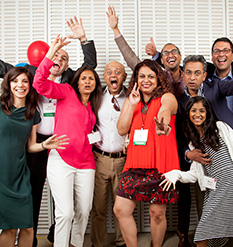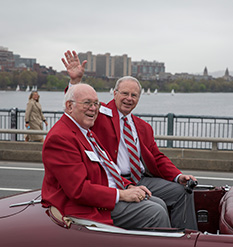What Does the MIT Alumni Association Do?
-
-
slice.mit.edu
Filed Under
Recommended
Highlights from FY16:

The Association supported 1,365 events worldwide, bringing together 51,480 alumni and friends.
The MIT Annual Fund, celebrating its 75th year, drew support that resulted in $75,672,706 donated by 44,696 alumni, student, parent, and friend donors.
The first two MIT Alumni Virtual Career Fairs drew some 2,173 alumni registrants from 50 states and 51 countries who tuned in to live chat with nearly 40 employers.
During January, 206 alumni hosted 437 students for the Student/Alumni Externship program.
Two off-campus events drew significant alumni interest. Nobel Laureate Robert Shiller SM '68, PhD '72 spoke to nearly 220 alumni and guests at Fidelity Investments in Boston. In Greenwich Village, 130 alumni and guests gathered for a live taping of the WBUR comedy show You're the Expert, for an episode featuring the work of Leslie Dewan ’07, PhD ’13.

The Faculty Forum Online: Alumni Edition series offered interactive webcasts that invited alumni to ask questions of alumni experts. Topics included Should We Go to Mars? and Feeding 10 Billion by 2050. Watch now.
The Association’s Facebook (42,002 fans) and Twitter (16,924 followers) presence ranked first among all Ivy+ schools in terms of percentage of the alumni population engaged in social media.
Slice of MIT, the daily blog, recorded 585,131 views this year, a 19 percent increase over FY15.
New videos and Slice of MIT Podcasts drew 131,994 YouTube views and 42,462 SoundCloud listens. The five-video Bringing 1916 to 2016: MIT Centennial Series and a Today in 1916 Twitter channel supported centennial efforts.
The Association’s website attracted 895,083 visits that produced 3.6 million page views.
A new Giving to MIT website, featuring customized content, launched in March.
Alumni Body
- Living alumni totaled 134,344.
- Some 52 percent have graduate degrees only; 24 percent have both undergraduate and graduate degrees.
- In terms of composition, 23 percent are female and 14 percent are international residents.
- By school, 47 percent hold engineering degrees; 21 percent, science; 18 percent, management; 7 percent, architecture; 5 percent, humanities, arts, and social sciences; and 2 percent, other.







